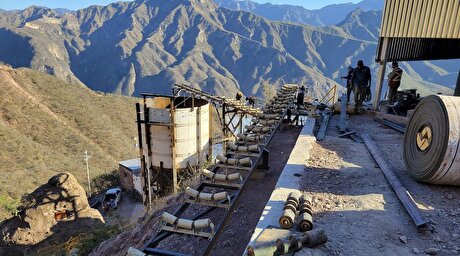
Slower growth weighs on base metals but constructive for gold, CIBC says


“CIBC economists are not forecasting a recession in 2019, but we expect increasing trade barriers and tariffs to slow down global growth over the next 18 months, delaying our previously forecast 2020 recovery to 2021,” the bank’s institutional equity research department writes in a research note.
Consequently, the bank’s analysts have trimmed their copper price forecasts for 2019 to US$2.75 per lb. (down 10.6%), and to US$2.85 per lb. (down 12.3%) in 2020. CIBC forecasts zinc prices of US$1.29 per lb. this year (down 9.6%), and US$1.35 per lb. in 2020 (down 3.9%).
“We acknowledge that a stronger-than-expected fiscal and monetary policy response from China, and/or supply disruptions (i.e., Chuquicamata in copper, Chinese smelting constraints in zinc), may support higher price estimates,” it wrote. “However, a demand slowdown is likely to trump higher sustainable prices.”
CIBC is raising its forecast for gold to US$1,350 per oz. in 2019 from its earlier forecast of US$1,300 per oz., and US$1,400 per oz. in 2020. It expects silver to average US$17.00 per oz. this year and US$17.50 per oz. next year.
The bank also anticipates a gold deficit this year “on the back of stronger demand for the commodity over the next two years, primarily from bar hoarding, net Central bank buying, and Exchange Traded Products, whereas supply is expected to remain relatively flat year-over-year.”
Over the last 24 months, the gold industry has been “forced to refocus on shareholder returns leading to improved balance sheets, asset rationalization, and improvements in return on invested capital,” the bank’s analysts write. “This fiscal discipline has also pushed out development pipelines and further reduced expected mine production over the next decade, thereby reducing the expected excess supply profile over the next several years.”
“Although large-scale M&A has kicked off once again, history has shown that it takes time for the industry to rationalize production pipelines.”


Energy Fuels soars on Vulcan Elements partnership

China extends rare earth controls to imported material

Galan Lithium proceeds with $13M financing for Argentina project

Northern Dynasty sticks to proposal in battle to lift Pebble mine veto

Ukraine launches tender for major lithium deposit

KoBold Metals granted lithium exploration rights in Congo

Freeport Indonesia to wrap up Gresik plant repairs by early September

Kyrgyzstan kicks off underground gold mining at Kumtor

Critical Metals signs agreement to supply rare earth to US government-funded facility

Equinox Gold kicks off ore processing at Valentine mine

India considers easing restrictions on gold in pension funds

Luca Mining expands Tahuehueto mine with Fresnillo land deal

Kyrgyzstan kicks off underground gold mining at Kumtor

Ukraine launches tender for major lithium deposit

KoBold Metals granted lithium exploration rights in Congo

Freeport Indonesia to wrap up Gresik plant repairs by early September

Energy Fuels soars on Vulcan Elements partnership

Northern Dynasty sticks to proposal in battle to lift Pebble mine veto

Giustra-backed mining firm teams up with informal miners in Colombia

India considers easing restrictions on gold in pension funds

Luca Mining expands Tahuehueto mine with Fresnillo land deal

Kyrgyzstan kicks off underground gold mining at Kumtor

Ukraine launches tender for major lithium deposit

Freeport Indonesia to wrap up Gresik plant repairs by early September

Energy Fuels soars on Vulcan Elements partnership

Northern Dynasty sticks to proposal in battle to lift Pebble mine veto

Giustra-backed mining firm teams up with informal miners in Colombia

Critical Metals signs agreement to supply rare earth to US government-funded facility


















